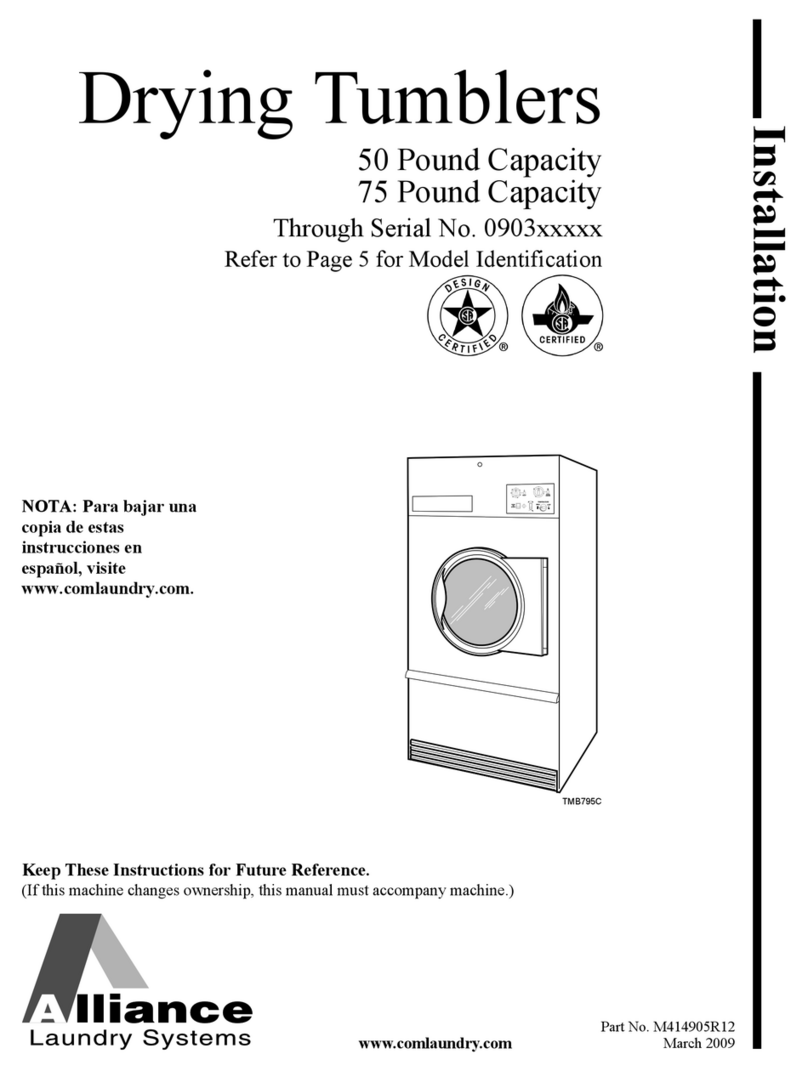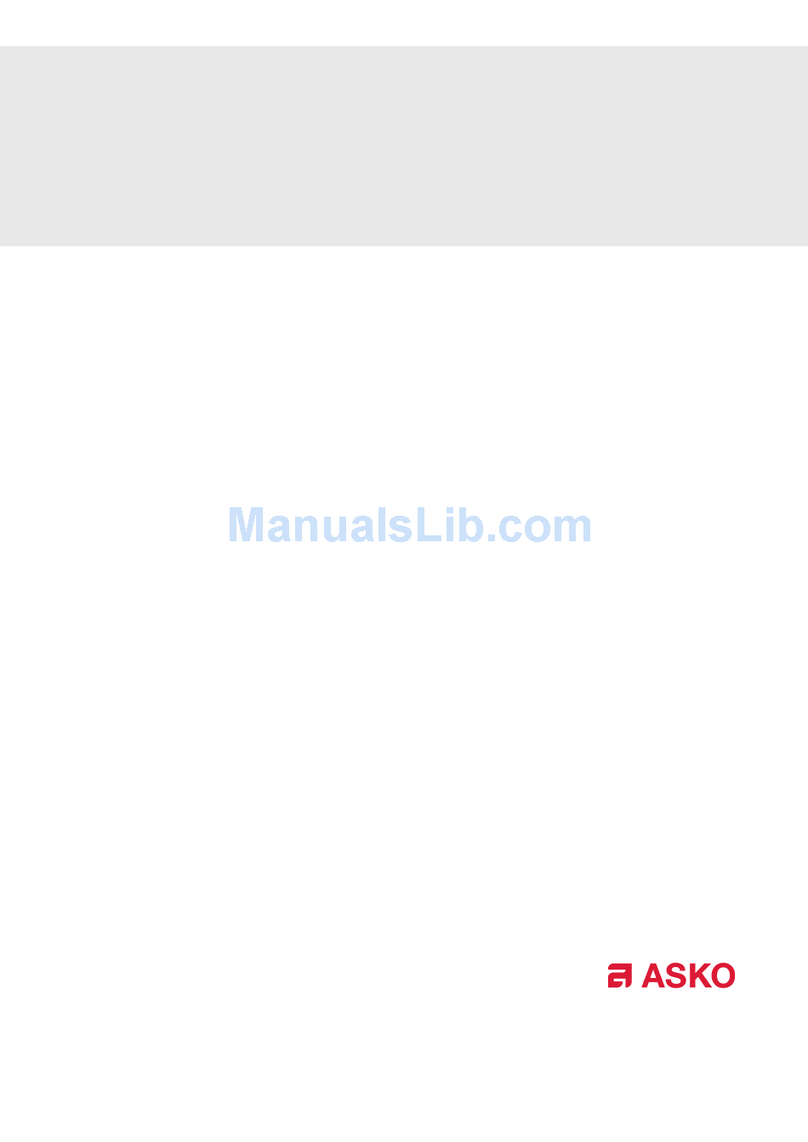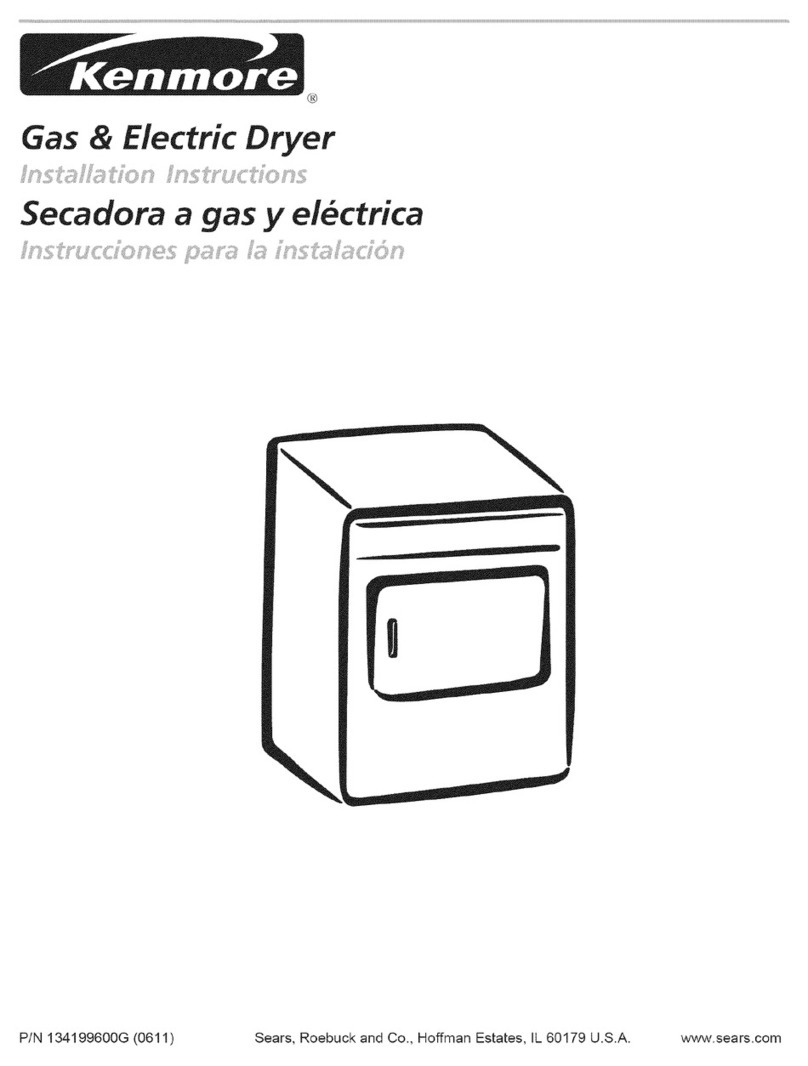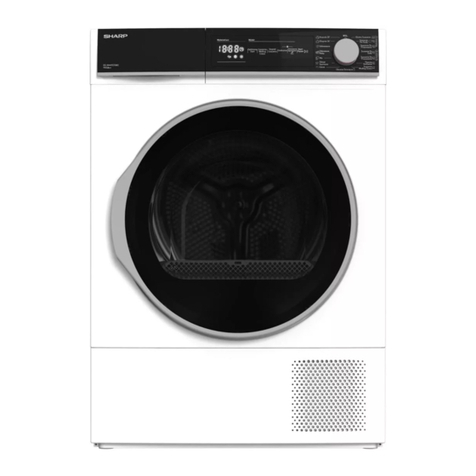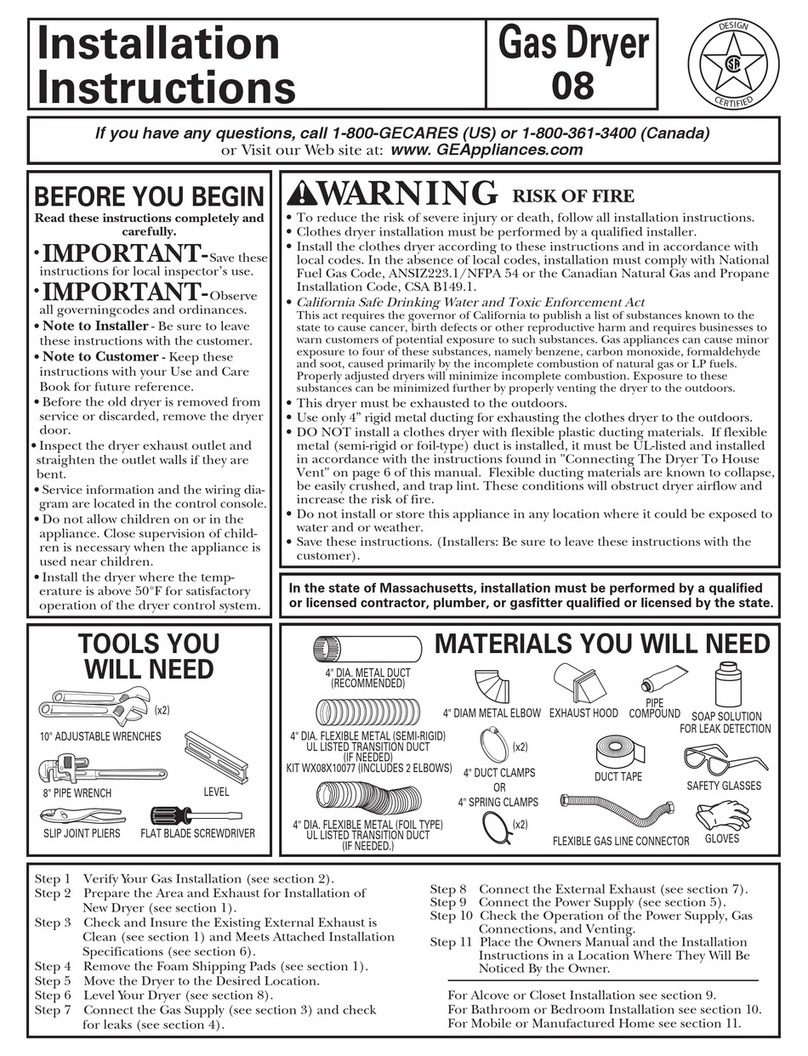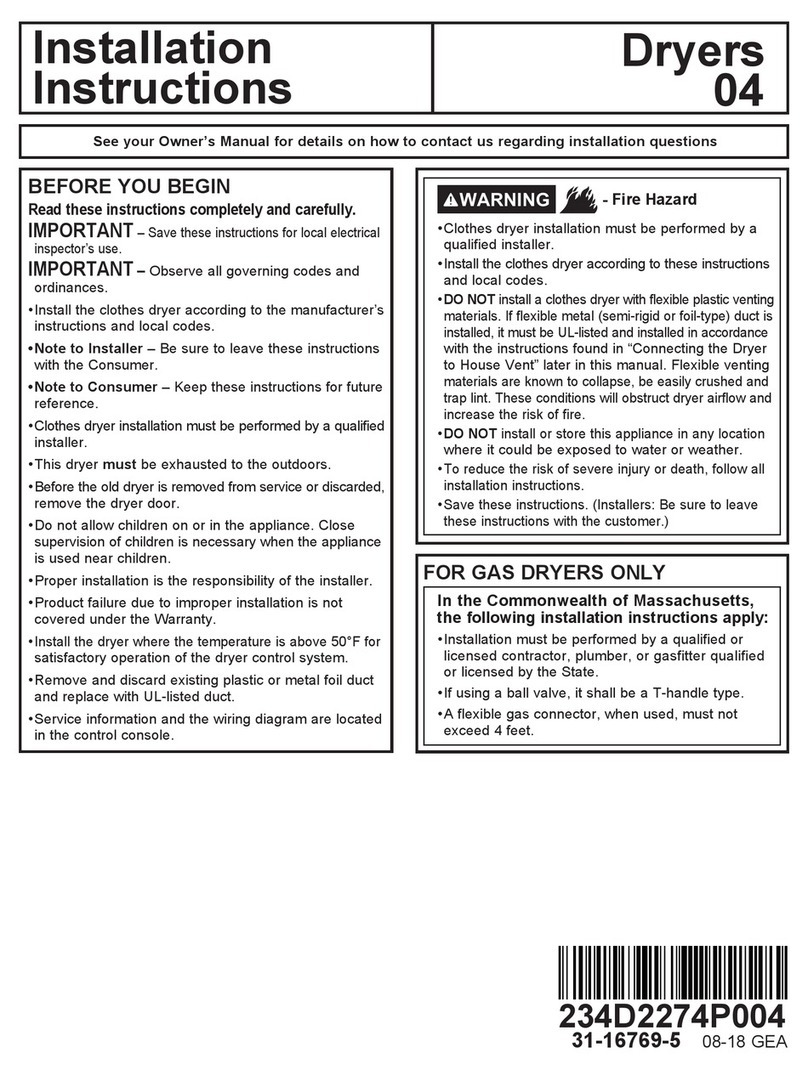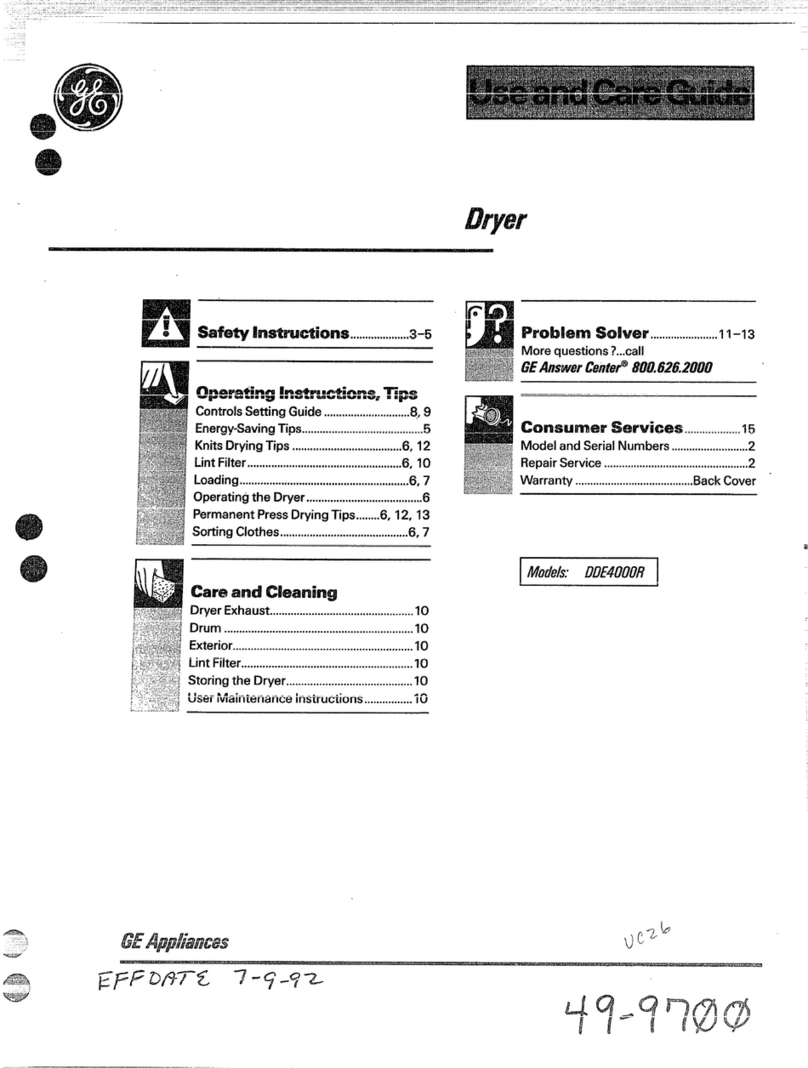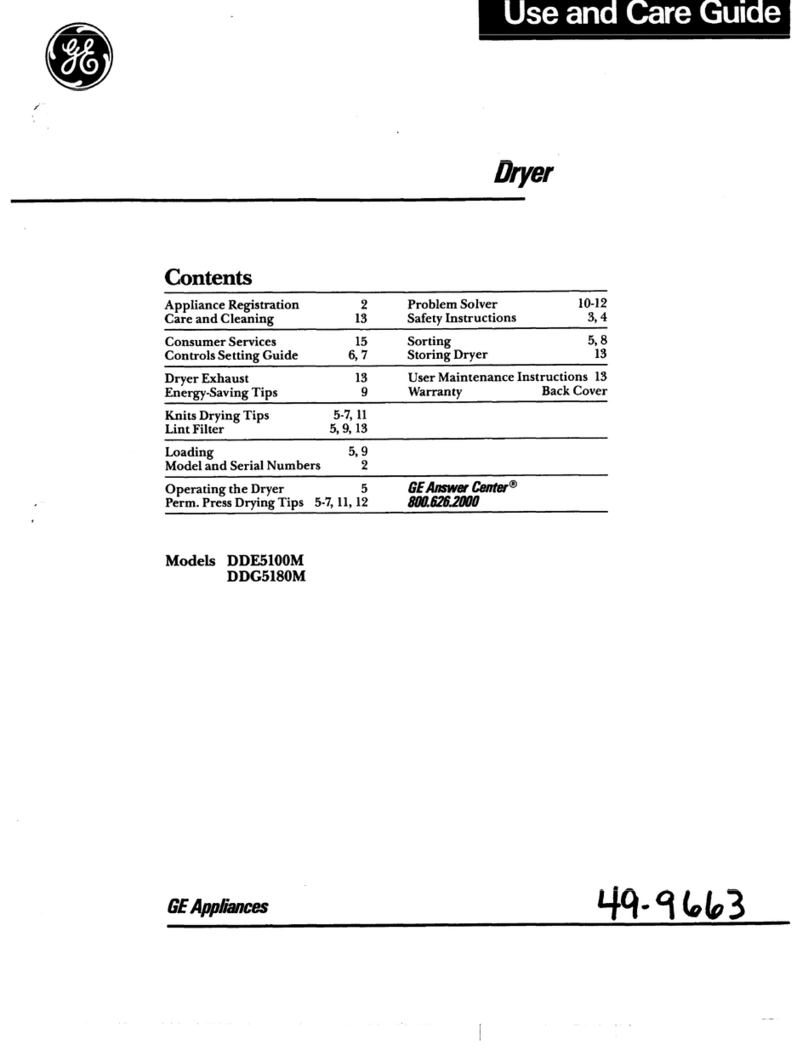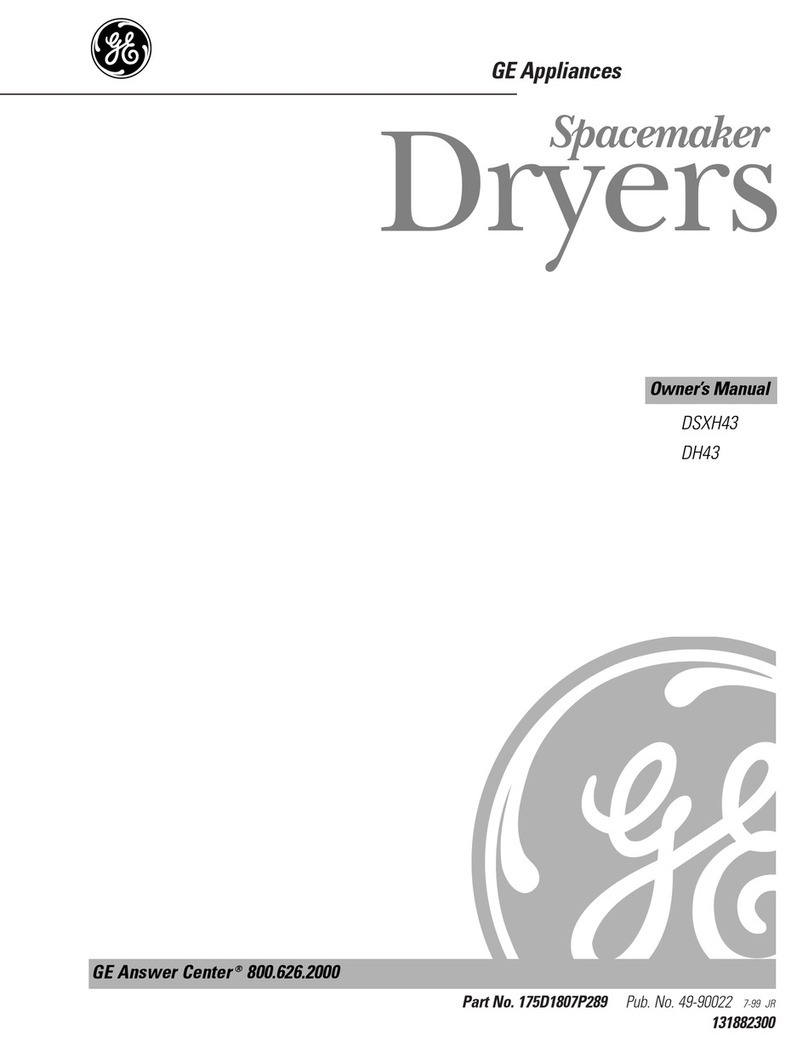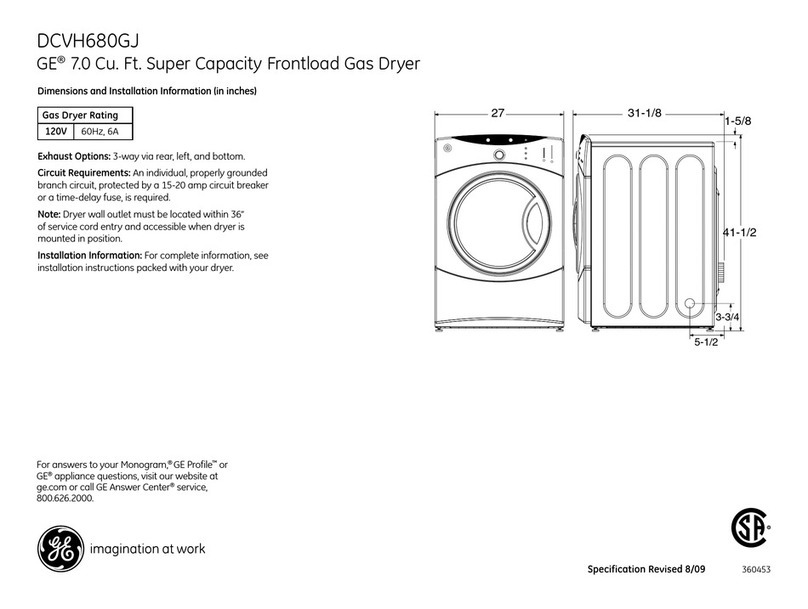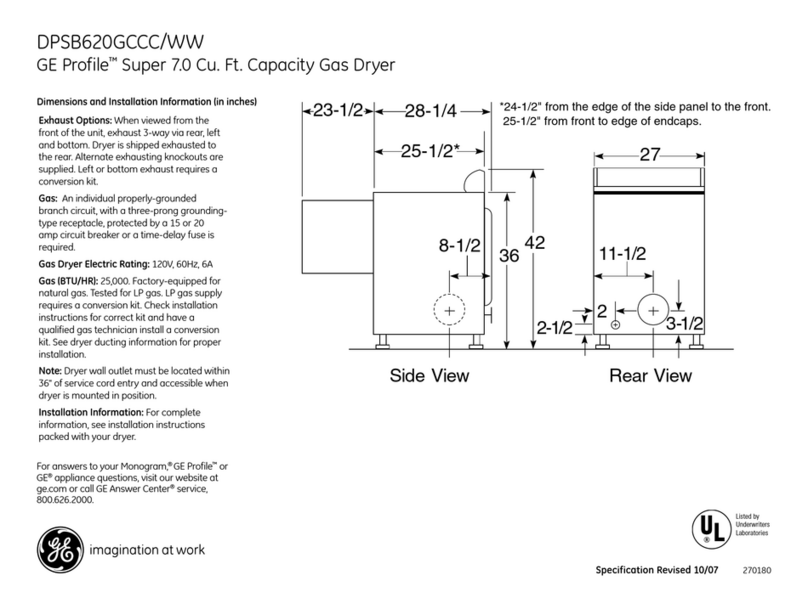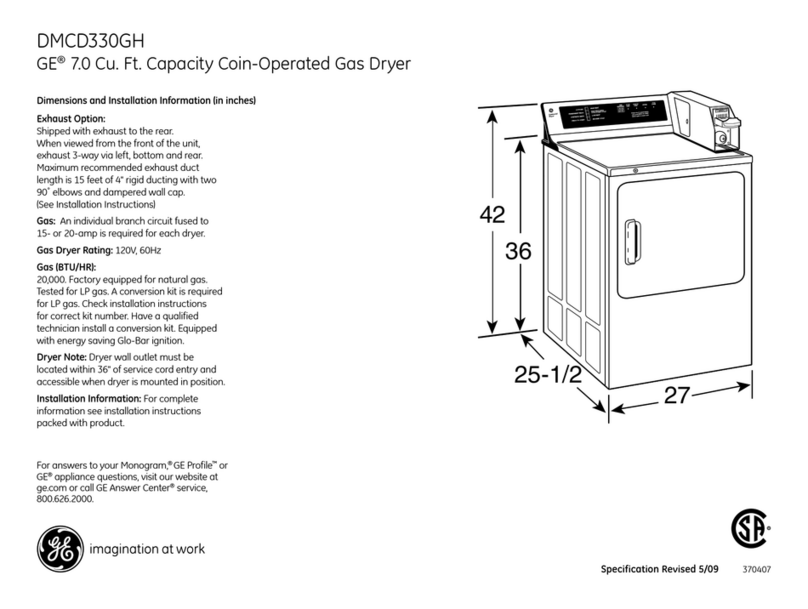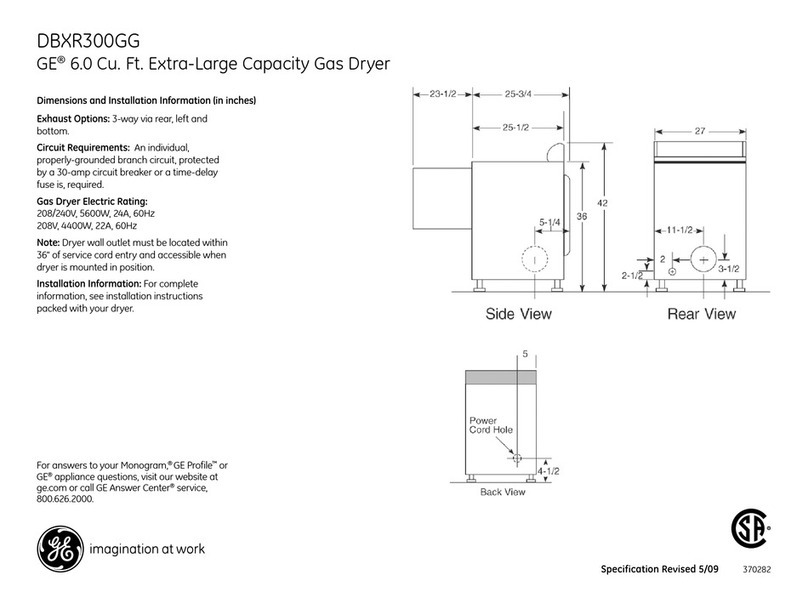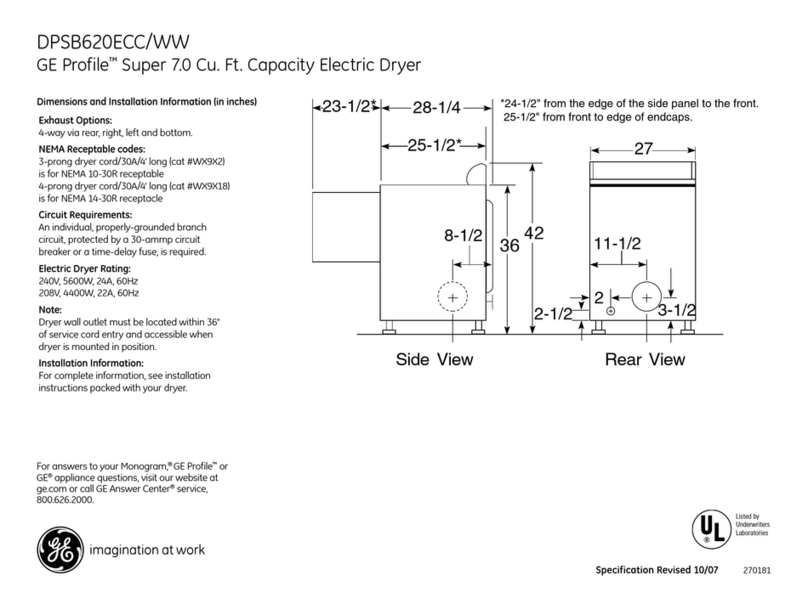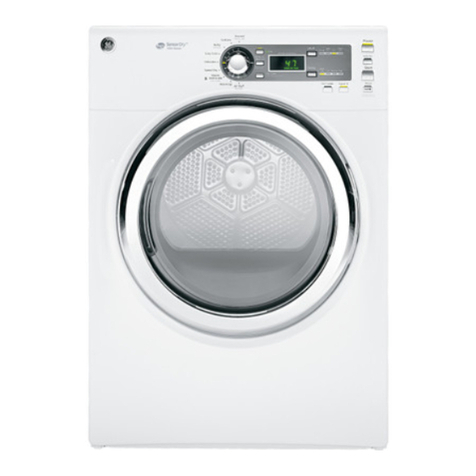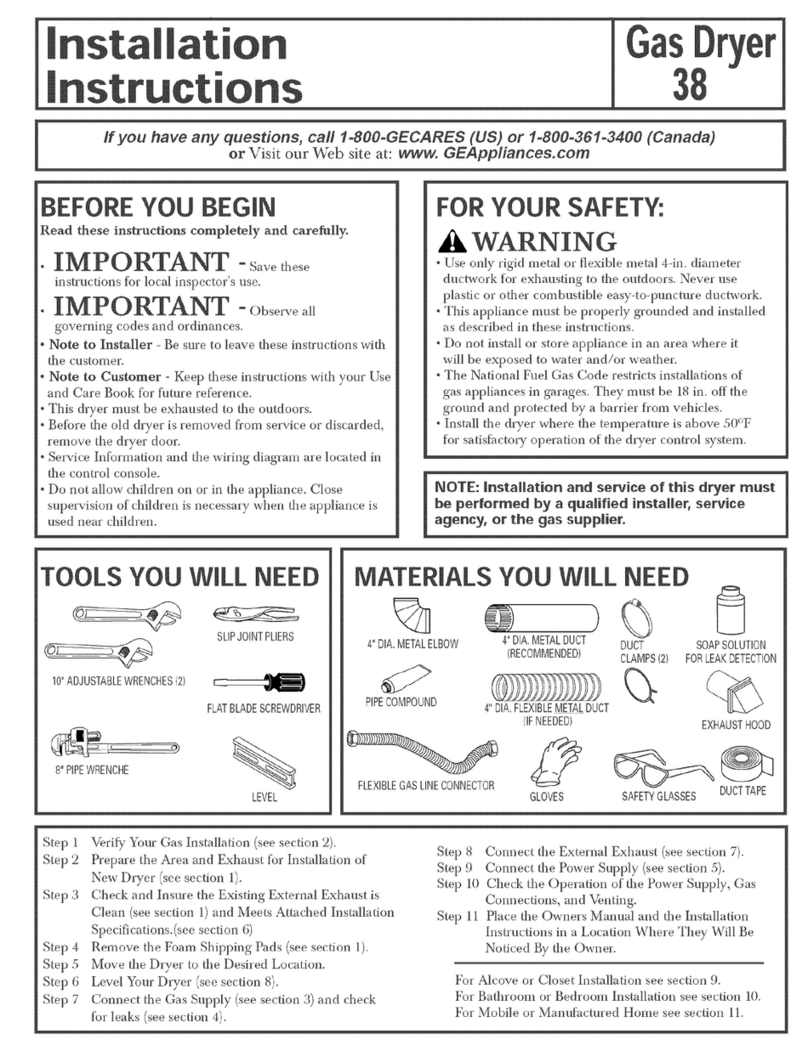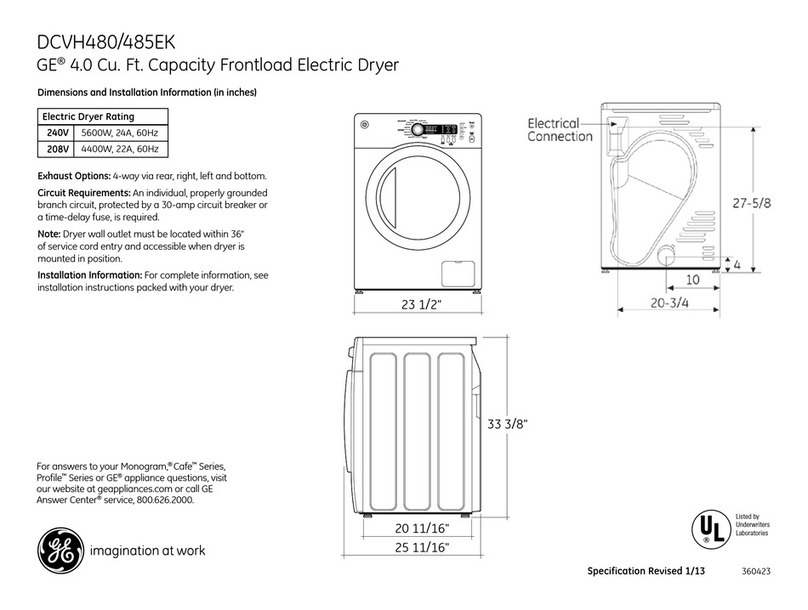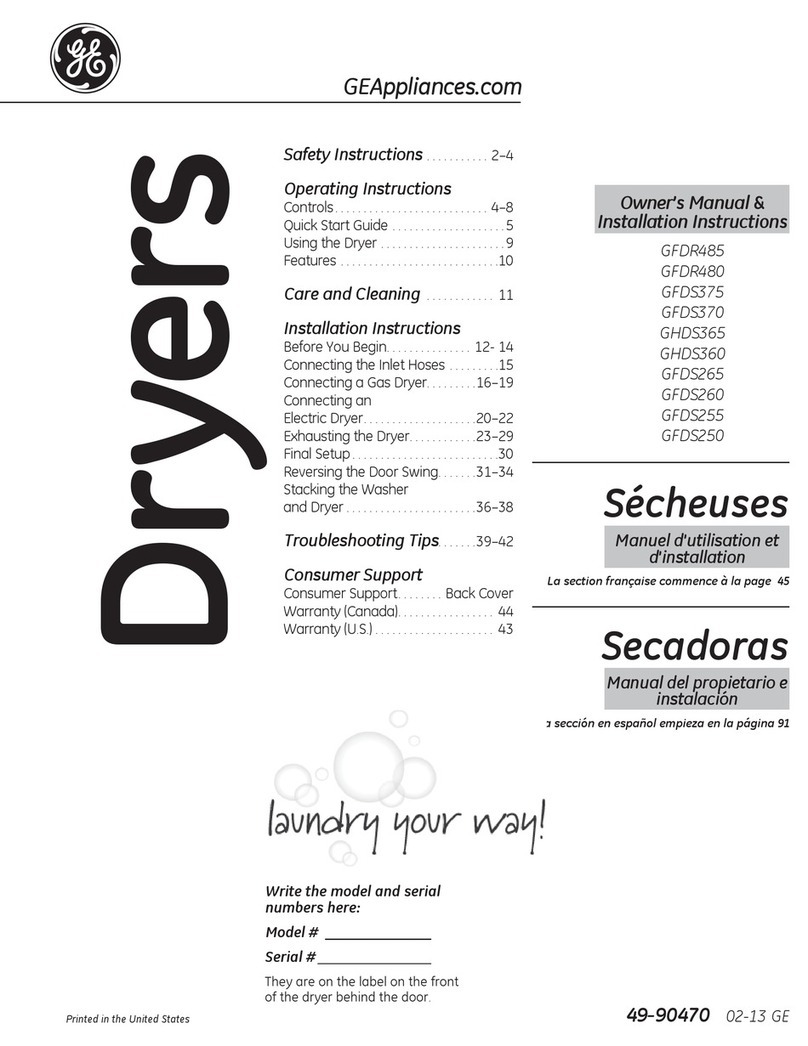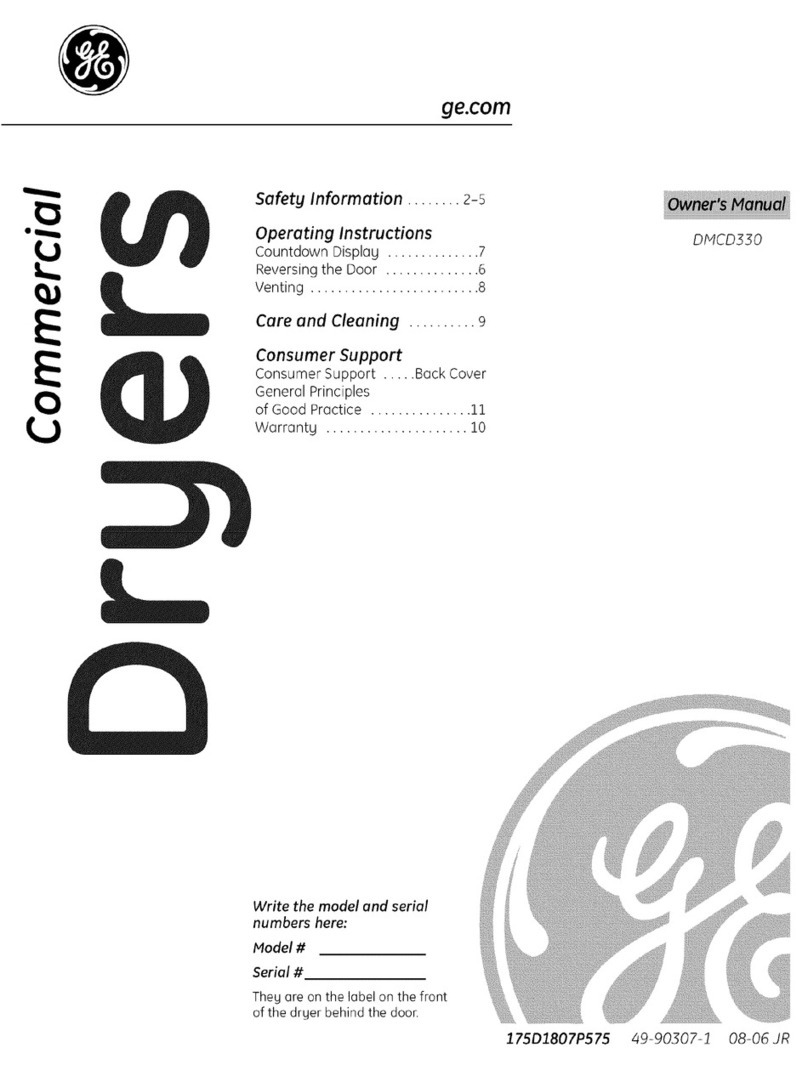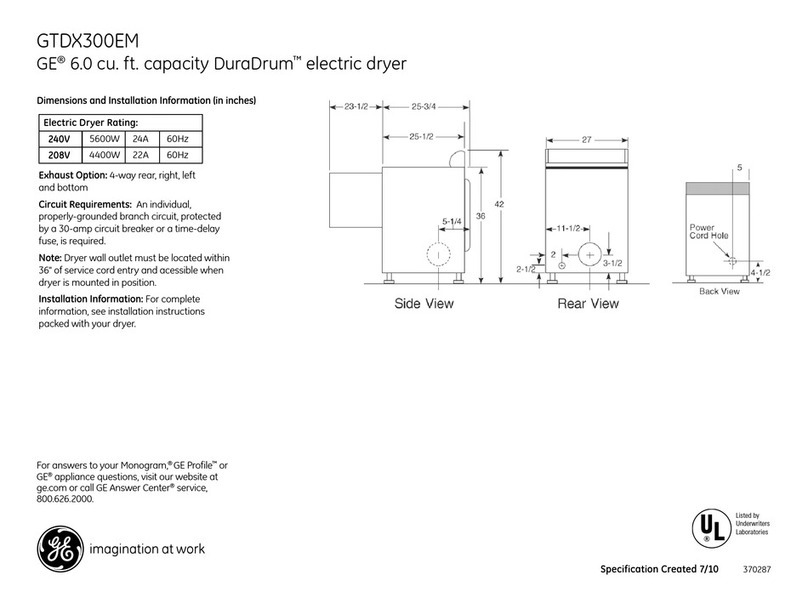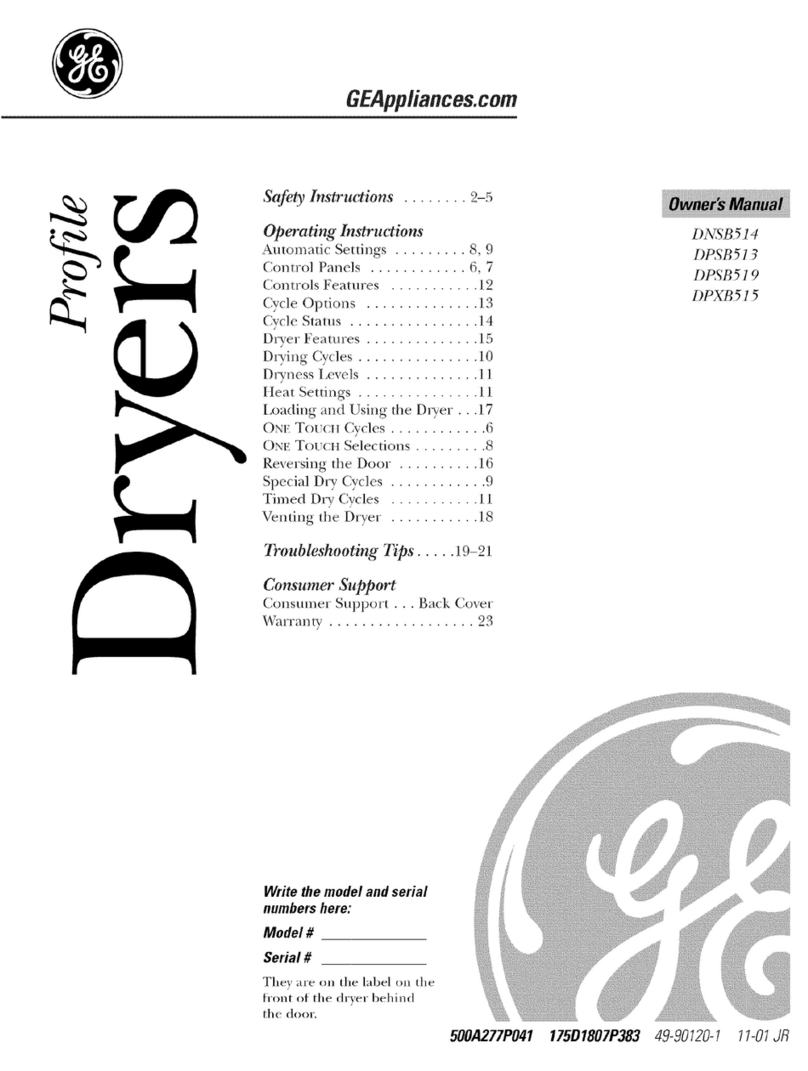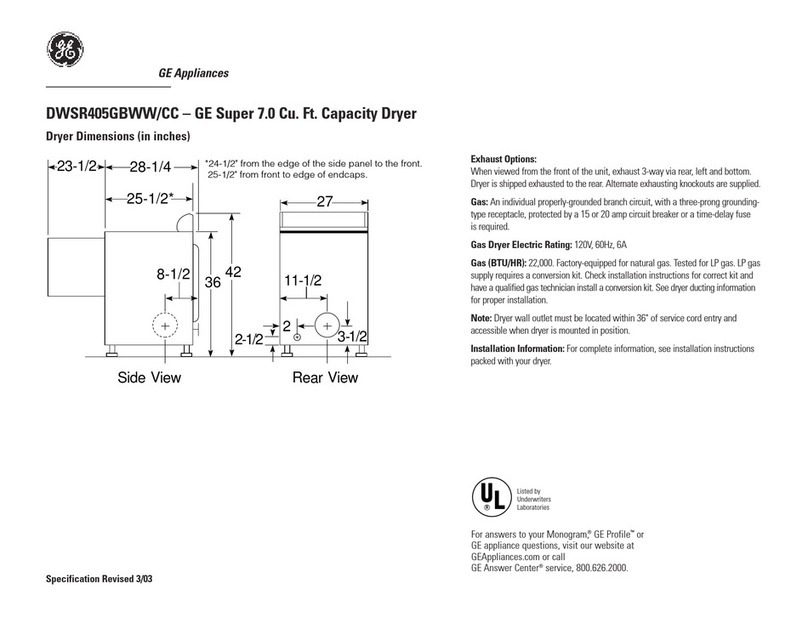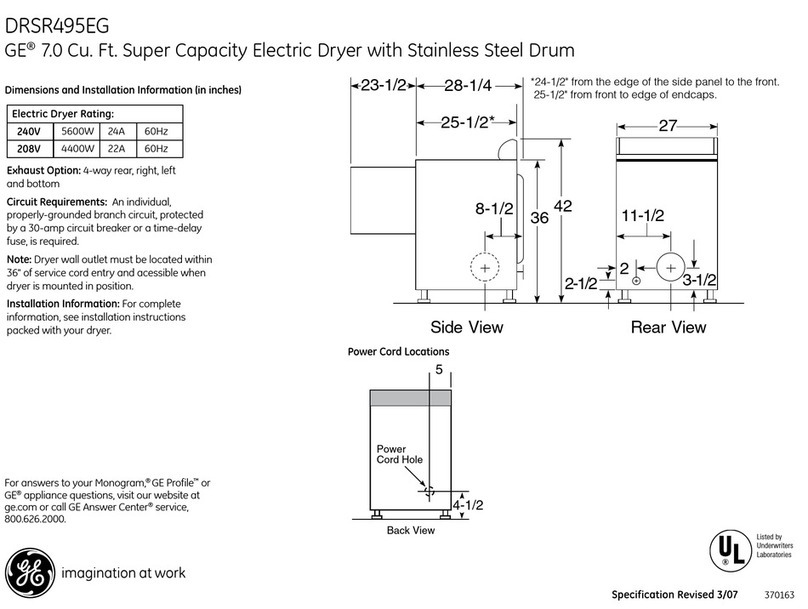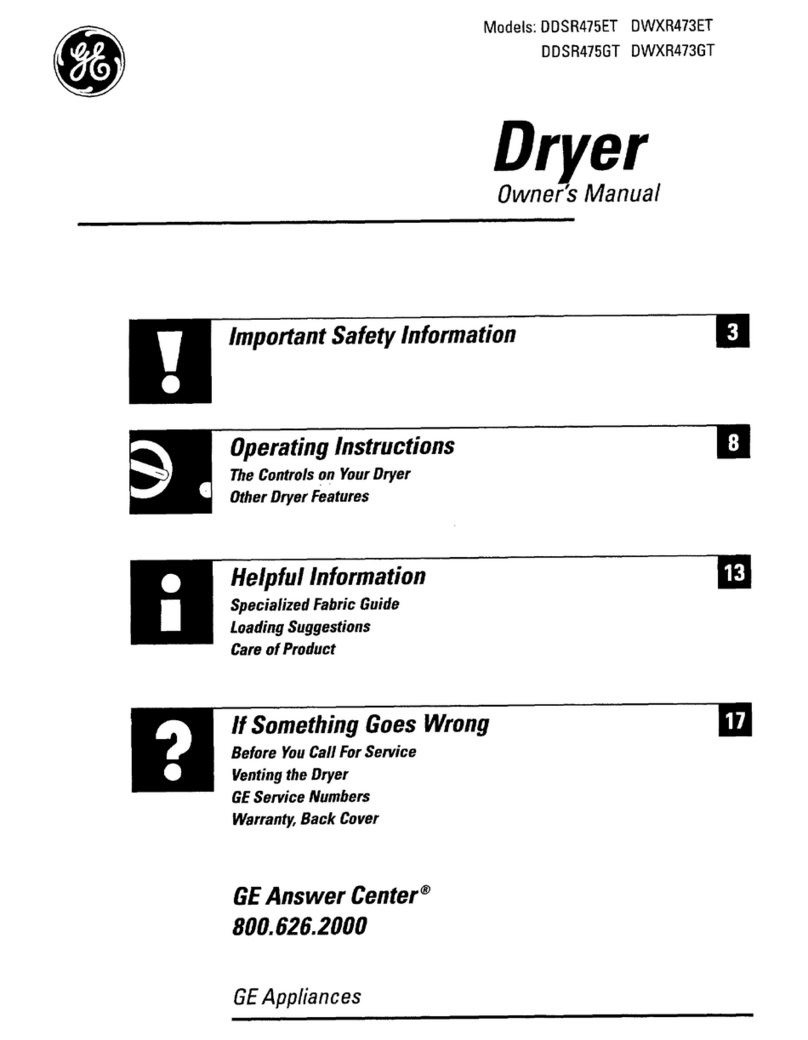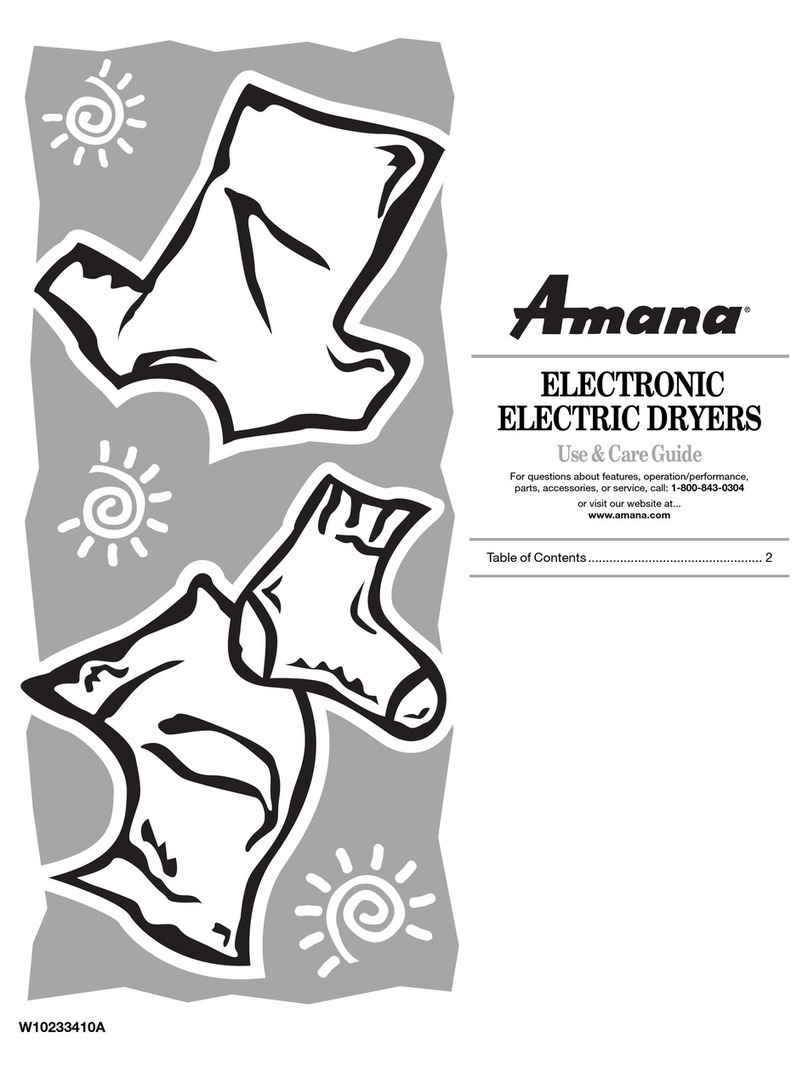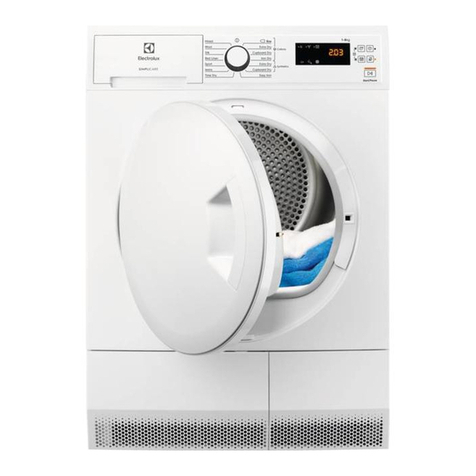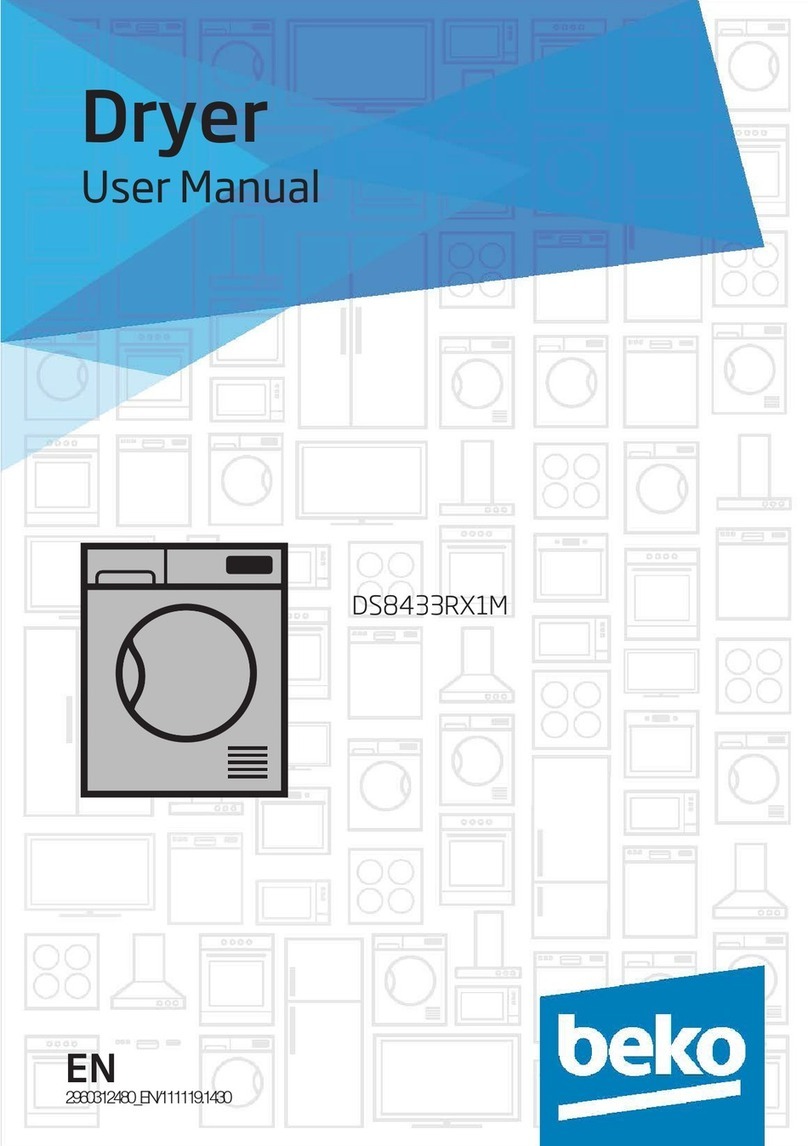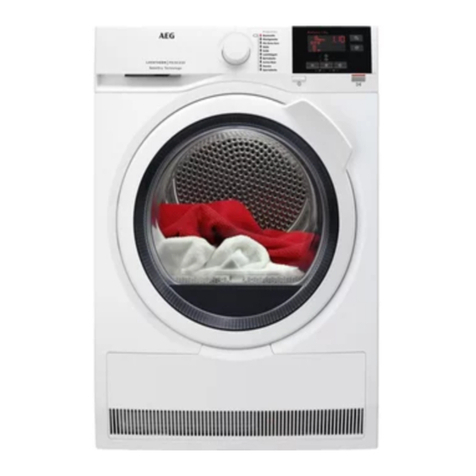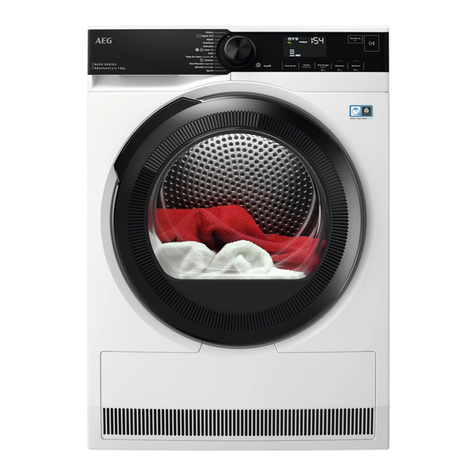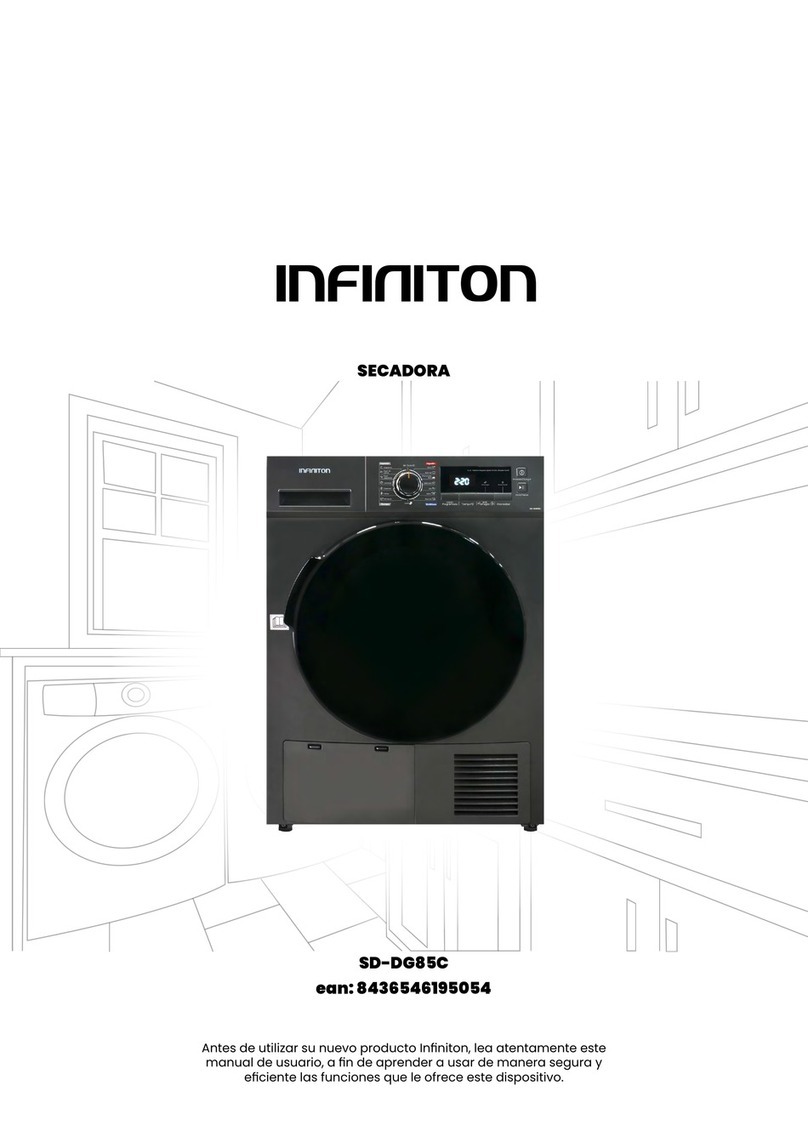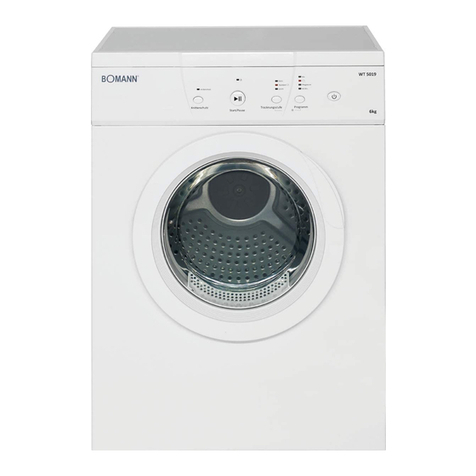WORTANT
SAFEH
~STRUC~ONS
(continued)
●
Garmen@
labeled
“Dry
Away from Heat”
(such as life jackets containing Kapok)
must not be put
in
your dryer.
4’$
h
●
Do not wash or dry articles that
have been cleaned in, washed in,
~
/
soaked in,
orspotted
with
combustible or explosive substances
(such as wax, paint, gasoline,
degreasers,
dry-cleaning solvents, kerosene, etc.) which
may ignite or explode. Do not add these
substances to the wash water. Do not use
these substances around your washer
andor
dryer during operation.
●
Any article on which you have used a cleaning
solvent, or which contains flammable materials
(such as cleaning cloths, mops, towels used in
beauty salons, restaurants or barber shops, etc.)
must not be placed in or near the dryer until all
traces of these flammable liquids or solids and
their fumes
have
been removed. There are many
highly
flatrtrnable
items used in homes such as:
acetone, denatured alcohol, gasoline, kerosene,
some household cleaners, some spot removers,
turpentines, waxes, wax removers and products
containing petroleum distillates.
G
●
Clean the lint
filter
before each load
—/
—
to prevent lint accumulation inside
— the dryer or in the room. DO NOT
OPERATE
THE
DRYER
W~HOUT
THE LINT
FLTER
N
PLACE.
●
Keep the area around and underneath
your appliances free from the accumulation
of combustible materials,
such as lint, paper,
rags, chemicals, etc.
●
The interior of the machine and the exhaust
duct connection inside the dryer should be
cleaned periodidly by a qualified individual.
To Minimize the
Po~ibfiity
of Injury
●
Never reach into the dryer while the
drum is moving.
Before loading,
utioading
or adding clothes, wait until the drum has
completely stopped.
Q
Do not dry fiberglass articles in your dryer.
Skin irritation could result from the remaining
glass particles that may be picked up by clothing
during subsequent dryer uses.
J’,
h
●
The laundry process can reduce
the flame
retardancy
of fabrics.
~
/
Toavoidsucharesult,
thegarment
manufacturer’s care instructions
should be followed very carefully.
Close supervision is necessary
if this appliance is used by or
near children. Do not allow
children to play inside, on, or
with this appliance or any discarded
a~~liance.
Dis~ose
ofdiscarded
anbliances
and
sb~pping
or
picking
materials
pr~perly.
Before
discarding a dryer, or removing from service,
remove the door of the dryer compartment.
m
●
Keep
dl
laundry aids (such
as detergent, bleaches, fabric
%
softeners, etc.) out of the reach
n
of children,
preferably in a locked
cabinet. Observe all warnings on
container labels to avoid personal injury.
●
Keep the floor around your appliances clean
and dry to reduce the possibility of slipping.
4
●
To minimize the possibility of electric
shock,
unplug this appliance from the
power supply before attempting any
maintenance or cleaning (except the removal
and cleaning of the lint filter).
$%
NOTE:
Turning the Cycle Selector
0.
knob to an
0~
position does NOT
/-
disconnect the appliance from the
power supply.
●
Do not tamper with the controls.
4
